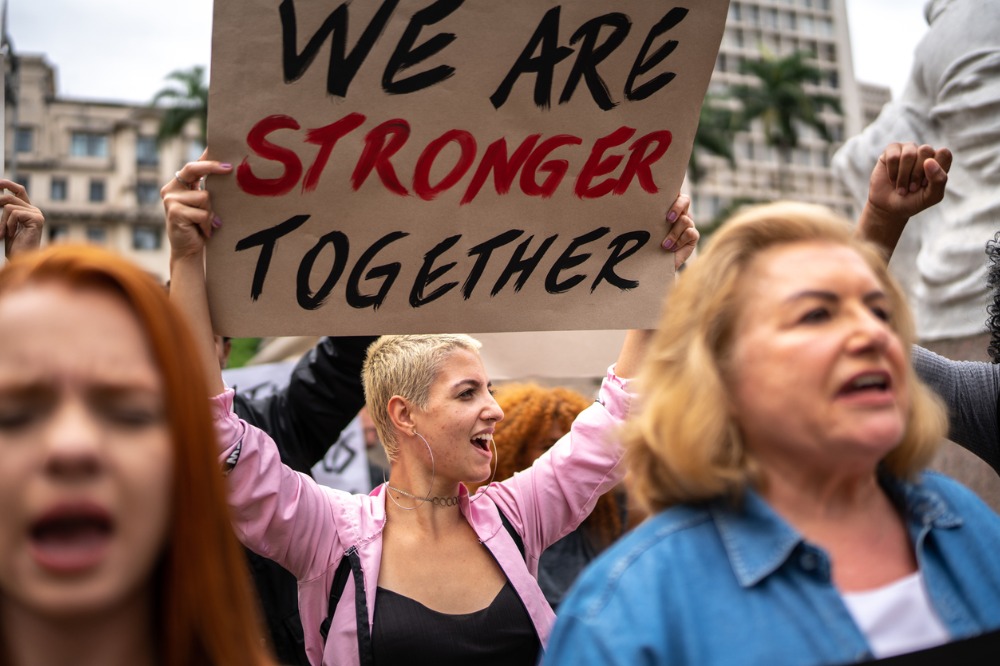
State and Territory Education Ministers have joined teachers, parents and students at Parliament House in Canberra today to fight for full funding of public schools.
The historic coalition includes Education Ministers from Victoria, NSW, South Australia, Queensland and the Australian Capital Territory, who joined the Australian Education Union (AEU) Federal President, Correna Haythorpe, State Presidents, Public Education Association leaders, public school principals, teachers, parents and students.
The move comes after the Federal Government gave a two-month deadline for the States and Territories to sign up to student learning and wellbeing reforms or lose billions in extra funding.
The announcement of the Better and Fairer Schools Agreement drew a chilly response from public school advocates, who pointed out that with just 1.3% of that sector funded at the minimum benchmark, the Agreement has the potential “to entrench inequality in a way not seen since the Coalition Government changed the Australian Education Act in 2017”.
The coalition of Ministers, teachers, parents and students gathering in Canberra today is now calling on the Albanese Government to fulfil its promise of providing full funding for every child in Australia by increasing the Federal Government’s offer (Schooling Resource Standard SRS share) from 22.5% to 25%.
“This is the moment in history that the Albanese Government can finally deliver on the promise, made over a decade ago to Australia’s public school students, that their schools and their education would be fully funded,” AEU Federal President, Correna Haythorpe, said today.
“We are joined today by senior secondary students who are part of the generation that has been denied full funding for their schools. We are also joined by teachers and parents, who will tell their stories of why full funding matters for public schools and why it is life changing for students and their communities.”
Haythorpe said the coalition will be handing out “a book of stories from the field”, from teachers, parents and community members to all Federal Parliamentarians.
“They need to hear why this is important firsthand and that is why we have installed a giant story book at Parliament House.”
The gathering comes as NSW and Victoria take their campaign directly to Labor MPs, writing to remind them “education is a cornerstone of Labor values.”
Letters from NSW and Victoria’s Education Ministers, The Hon Prue Car and The Hon Ben Carroll, were sent to over 50 MPs and Senators this week urging them to increase their contribution.
‘Public school kids are $1,000 behind the starting line’
NSW Deputy Premier and Education Minister, Prue Car, said her state’s public schools are currently facing a 5% funding gap, which she said “puts NSW public school students $1,000 behind the starting line.”
“Education is a cornerstone of Labor Governments, and it should be delivered equitably, with no child left behind,” Car said. “We think it is important that every member of Parliament has all the facts in front of them and that is why we have written to them and why I am here in Canberra to get that message across.”
Car said the NSW Government “will not sign any agreement that shortchanges NSW public schools”.
‘No staff or student left behind’
Victorian Education Minister, Ben Carroll, said the Federal Government “must rethink its priorities and deliver fair and full funding for Victorian Government school students”.
“The Commonwealth's proposal will leave public school students $1,000 worse off every year – we’re standing with our state colleagues to fight for a better deal that won’t leave Government school students and staff behind,” Carroll said.
SA Education Minister, Blair Boyer, said State and Territory Governments are best positioned to determine what families, students and teachers need in classrooms.
“That’s why I’m here in Canberra - to stand with my colleagues advocating for public school funding,” Boyer said.
“In South Australia, the five per cent is worth as much as $190m of extra funding for public schools every single year. That would go directly into school supports so that teachers have the time, resources and support to help students achieve the best academic outcomes.”


